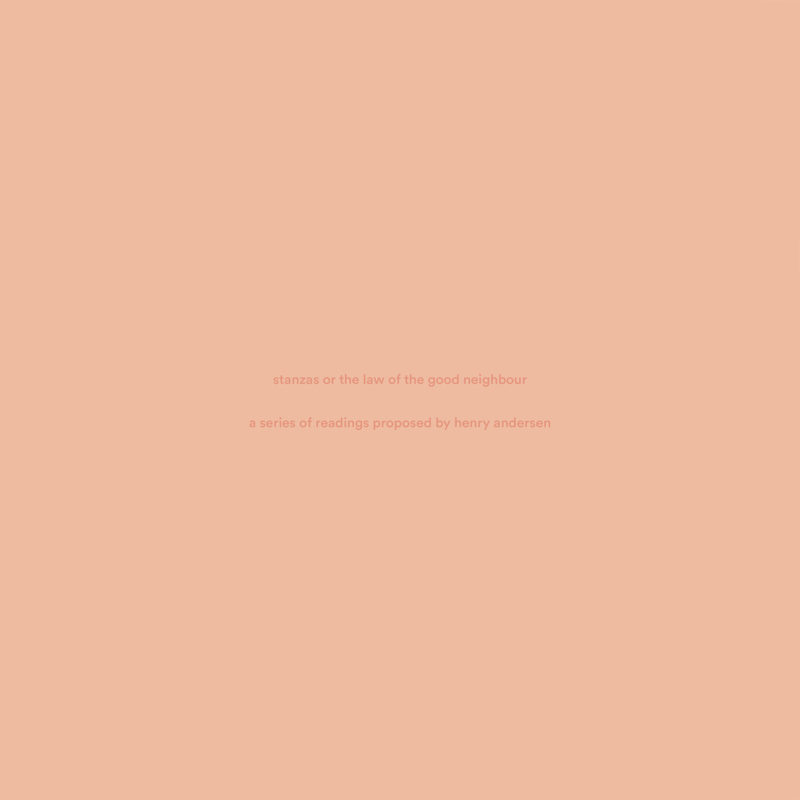Henry Andersen
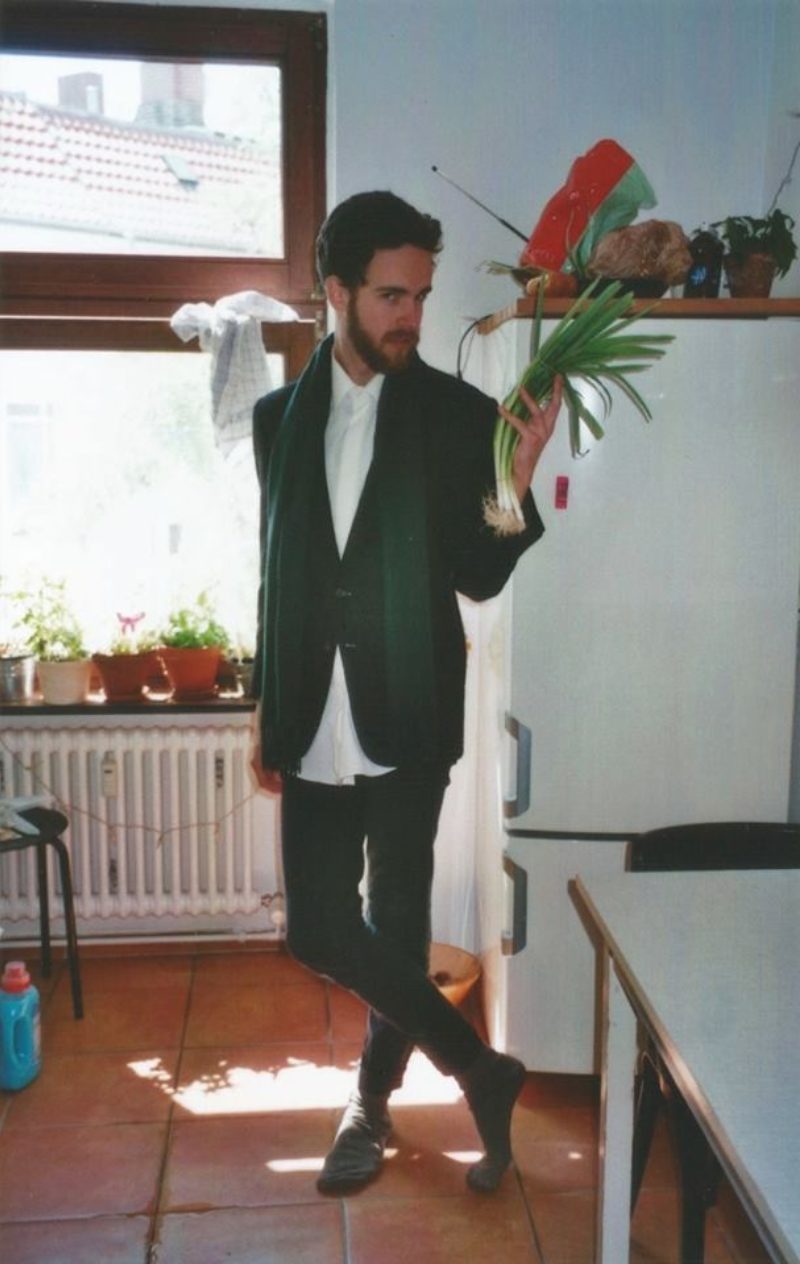
Niels Latomme
Henry, what I like about the record, is that it seems to fit in into a whole body of work?
Henry Andersen
Thanks. I like this about visual art. I’m coming from a composition background where you write something for an ensemble and performers. You’re dealing with that as a dispositif. So each time the piece starts with a request to write for a certain set of instruments. As a composer, I had the impression that every time I had to start from scratch. It felt like every project was dislocated. I wanted to reuse material more often and to develop ways of working that would enable me to build on stuff that I'd done before.
This list of words is maybe the first attempt at this. Collecting this index of words is an activity that I have been working on for a couple of years now. I try to do it without thinking about a particular outcome. When there is a chance to present the work, I adjust it to the circumstances. It has been a record, an exhibition, a performance, a publication… Its public face changes every time.
I like to think of the list as a kind of liquid that chances its shape to fit the container.
NL
The list functions as a score that conducts action. How do you write the list? Why these words?
HA
Each word should sound like the word that came before it. Other than this very simple rule, the choice of words is pretty freely associative. Its the words I know and that I like. It’s way to think about my relationship to language, how it changes. The most obvious changes are of course the foreign words, according to the place I live. When I was living in Berlin for instance, there are more German words. When I moved to Brussels, I started to learn French, and so French words start to appear in the list. There is also a section in which the word ‘Molenbeek’ appears several times. I was writing this just after the Brussels attacks and this word was very much 'in the air'. Aesthetically too, it’s a really beautiful word for a non-dutch speaker.
NL
How so?
HA
I don’t know. It has at the beginning these soft ‘m’ and ‘l’, but at the end it has the hard ‘k’. It’s an interesting formation of sounds. I wouldn’t have thought about it necessarily except that it was so much in the news and in conversations with friends. I think the list is a way of tracking how I’m dealing with language, and also a way of tracking the contexts I’m circulating in. That is the private activity of it. I organise private or public readings together with friends, so in that way these readings become another way of archiving, of tracking the people I’m spending time with. I moved cities in the meantime, so I had to start my social circle more or less from scratch.
Even if these elements don't necessarily translate to the listener, I still think they are an important part of the piece – at least for myself.
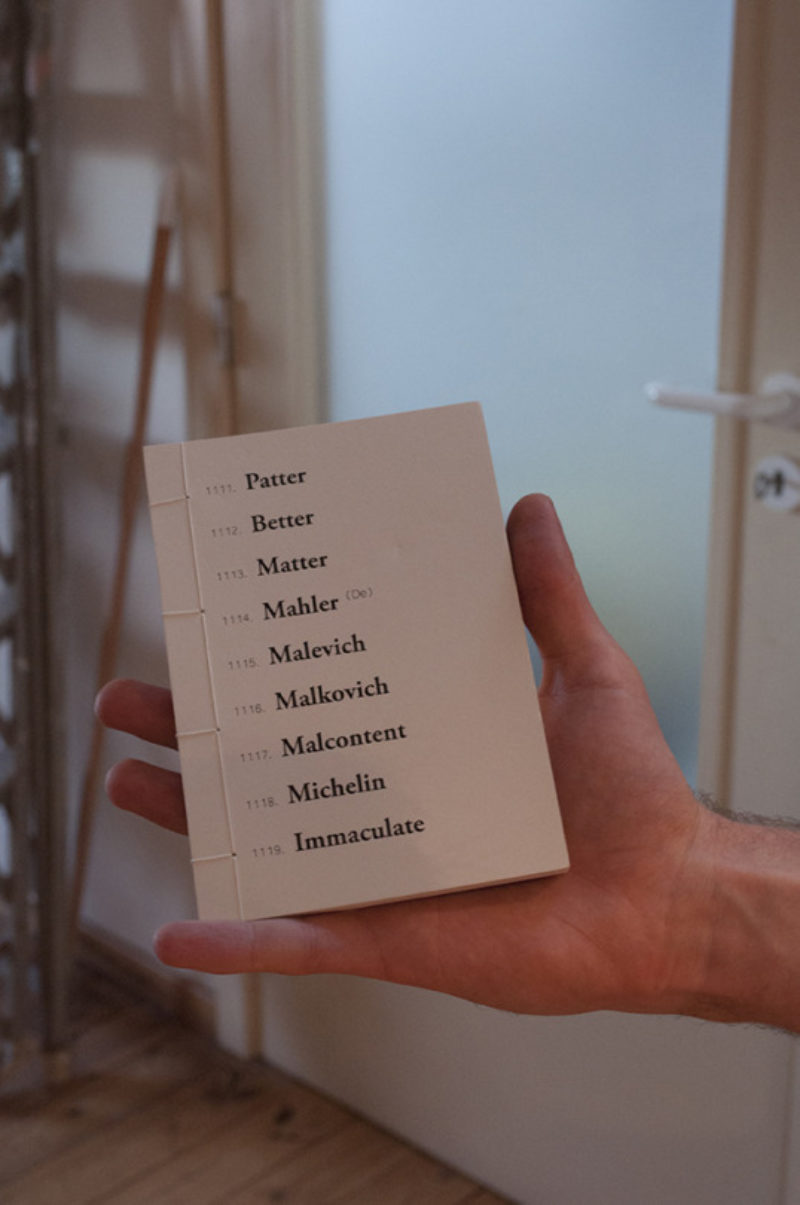
NL
How does it relate to other works, like the room dividers?
HA
That installation is modelled on room dividers developed by the architect Eileen Gray. She uses room dividers a lot in her designs as a way of playing with the ambiguity of public and private space. I was interested in them on a theoretical level, but also how these objects become bodies in space. You have the idea of shiftable architecture, but also of someone standing in the room. I am making bootleg copies of her designs, rendering them with MDF and acoustic foam, so that they become sound baffles. They are objects that I can apply to different contexts, always in a kind of 'dialogue' with some kind of sound material. It’s about the idea of playing and changing a space at will. It has not direct link to the list necessarily, but that would be one possible material I could pair them with.
NL
The parallel is that in both works you aim for a versatile approach with different outcomes?
HA
Yes. It’s about a performative architecture, rather than about entering a space and accepting it as being given.
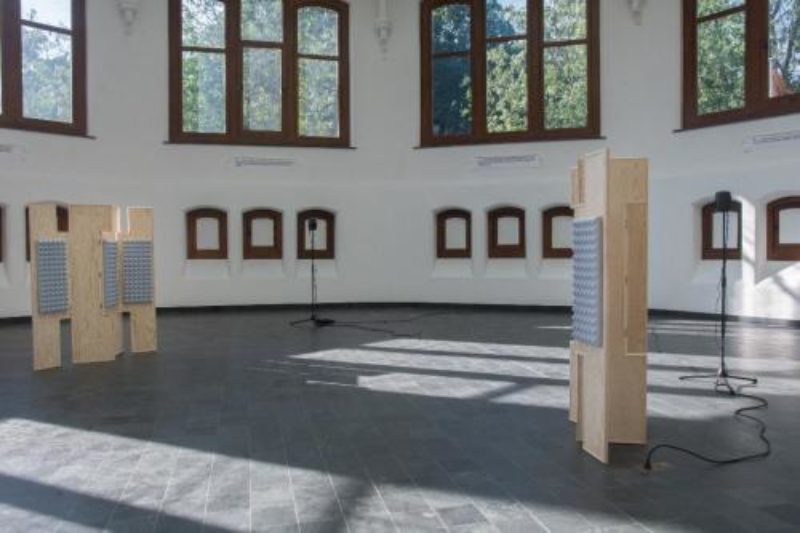
NL
You could be described as a conceptual artist, although you have a very material and tactile way of working. For instance you choose to work with friends, instead of working with professional performers. It speaks of a heightened awareness for the individual qualities of bodies and how they produce specific sounds.
HA
Conceptualism has to do for me with understanding how structures work in terms of form and meaning. To generalise, the first generation of conceptualism was maybe about uncovering these structures and using them as forms in themselves. It was about communicating on the level of structural meaning rather than at the level of a material meaning. Today these techniques have been developed, and I think it’s now fair game to use them 'impurely', as a way to deal with material or with bodies for instance.
I think these artists in the 1960s were working very much with a metaphor of language. Now I think its maybe time that the metaphor shifts and it becomes again interesting to look at material and bodies in terms of these conceptual structures.
NL
Why is that?
HA
In that traditional sense, language was a seen as antithetical to the body. It was seen as something that happens in the realm of thoughts, the structures, the ideas and the mind; not in the body.
I think it’s interesting to see language as a something that intersects and interrupts the body.
So for example with Stanzas..., the only material is language, but its my impression of performing or hearing the piece that I pretty quickly lose the possibility to focus on the words themselves. The language ends up being more like an interface to think about the voice of the readers and the relationship they have to one another. Its a way of inserting myself into this interaction.
NL
But in a historically sense, why you feel the need to focus on the body and materiality?
HA
I feel like the body is a big part of contemporary discourse today, in part because of stuff like feminist and post-colonial theory. There is a question here, against the universalism of conceptual art or structuralism, of thinking about the differences between individual bodies. Or that's at least one reading.
For myself, I don’t know. It’s an urge to be a body, to interact in a kind of essential way with my surroundings. A lot of my work is about giving language a body. I think that’s why I’m dealing with handwriting, with accent or voice. The question always is to think about how language enters space, and how it interacts with bodies.
NL
Johns Lunds told me that “he wants that you can hear the exhaustion and the spit of the playing”. He uses a more ‘pure’ or physical and bodily approach to extend the instrument. Which seems to be a paradox, as disembodiment through technology is a more obvious way to extend music. It’s something you see with a lot of artists, using a more pure, limited approach in order to overrule the limits of music, instead of using the endless possibilities technology proposes. Why this need to limit yourself, like your need to give language a body?
HA
Well, I think everything is technology. The urge give language a body is not about returning to a more pure state; it’s way of locating yourself. Even when your using technology, surfing the internet or something, you still are still a body, and this awareness of materiality and the body, is a way of find and place yourself in this context. A body is always specific. This body is Henry’s body, and that’s is Niels' etc.
For me to work with different friends to do the readings, I select people quite carefully, based on a certain character or a certain voice. I’m not interested in them being interchangeable bodies. Every different pair will produce a different result, there’s always a fair amount of chance. Which is interesting, because it creates moments that I could not have designed, or written down on a score.
NL
When did you start the list?
HA
A couple of years ago, in the summer of 2015, when I was living in Germany. I continue the list intermittently, there’s no strict rhythm to when I work on it. I'm not so disciplined to be able to write every day, for example. It started out as fun game for myself one night, with some rules about how to get from one word to another. I first showed it publicly with the ensemble Arcades, in Berlin. Back then, it was part of a series I was writing where all the pieces were called 'Stanzas'. Each piece was made of two opposite materials that would play simultaneously, without attention to the other. Within the series, it was also possible to mix and match materials from other pieces. It was a bit of a response to the way I saw the people around me dealing with counterpoint. Everyone in the scene was writing these pieces about sounds interacting to create beat frequencies or something, where each voice exists only to interact with the other. It all felt a bit co-dependant somehow. I wanted to think about two voices that would be independent enough to function alone, but when you brought them together something unpredictable would happen. Like how objects relate to one another in a room. The list was first just one part of that series but it was the strongest part so it kept coming back. I still pair it with other material sometimes, like with the white noise when I performed in Brussels a Huis 23.
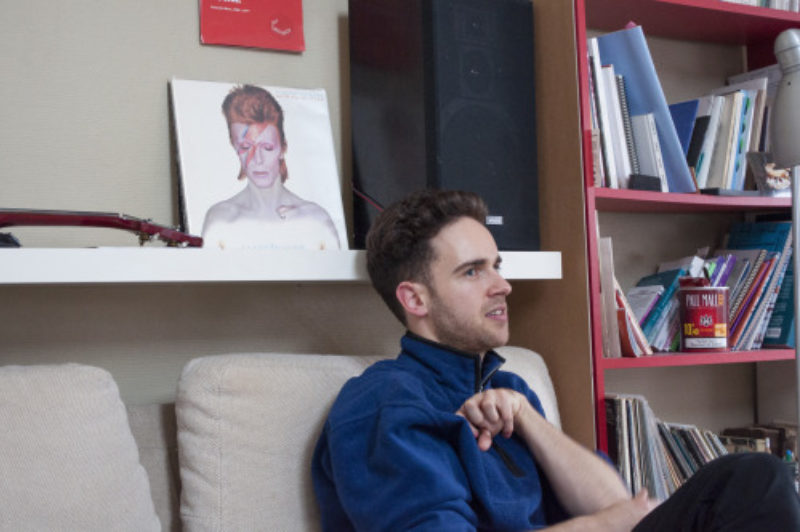
NL
How come you moved from music to a more wider approach, to performance, visual arts and writing?
HA
I started playing music in bands as a teenager and I was always the guy wanting to add strings, trumpets and so on to the tracks. That’s why I began to study composition. In Berlin, I studied with Peter Ablinger, who works with very minimal, reduced materials. He applies a lot of metaphors from conceptual art. At the same time I fell into a circle of friends who were visual artists, and I became interested in what they were doing. I didn’t have money or access to a piano, so I wasn’t able to write in the way I was used to, by using a piano to find sounds that would go together. So I developed ways to generate material conceptually. Language has a sort of economy to it. It’s a cheap tool.
NL
Talking about economy and art, do you think your music is political?
HA
Maybe. I think there is an important difference between art that is political in terms of its content and work that is political in terms of its production or its forms or whatever. I think choosing to make art is already political in a way.
In terms of the list piece, there is no deliberate politics in the choice of words, but I think of the way it is produced as practicing a kind of politics – to work with friends and to treat this as important and generating its own sense of value. Its another economics. Thats for me the politics of this piece, spending time with people around me. The sound itself is just an off-shoot of the interaction between people.
NL
The result is documenting human activity, functioning as a personal ethnography?
HA
I think so. There are a lot of recordings that have never been made public, that were more about the activity. They don't need to be shown. I think it’s important not to be result-oriented all the time. Often, I do these readings with couples, at their apartments, and the recordings document the micro-politics happening between two people. They hint towards small things, like if one of them is nervous, or needs support from the other. Theoretically, someone could write all these little changes and delays into a score, but it becomes quite boring. I think its much more interesting that the imperfections become a way of revealing something about the readers.
NL
That’s Lacan all over again.
HA
laughs.
NL
How is Henry Andersen present in it?
HA
I think of myself as the person who proposes the readings... at least for Stanzas. For a long time I was very occupied by the idea of being physically absent from my work, and trying to be present in other ways. Like in the script or the choice of people who read or something. I’m less and less concerned about it. I don’t mind so much to appear now. Maybe I'm getting more confident...
